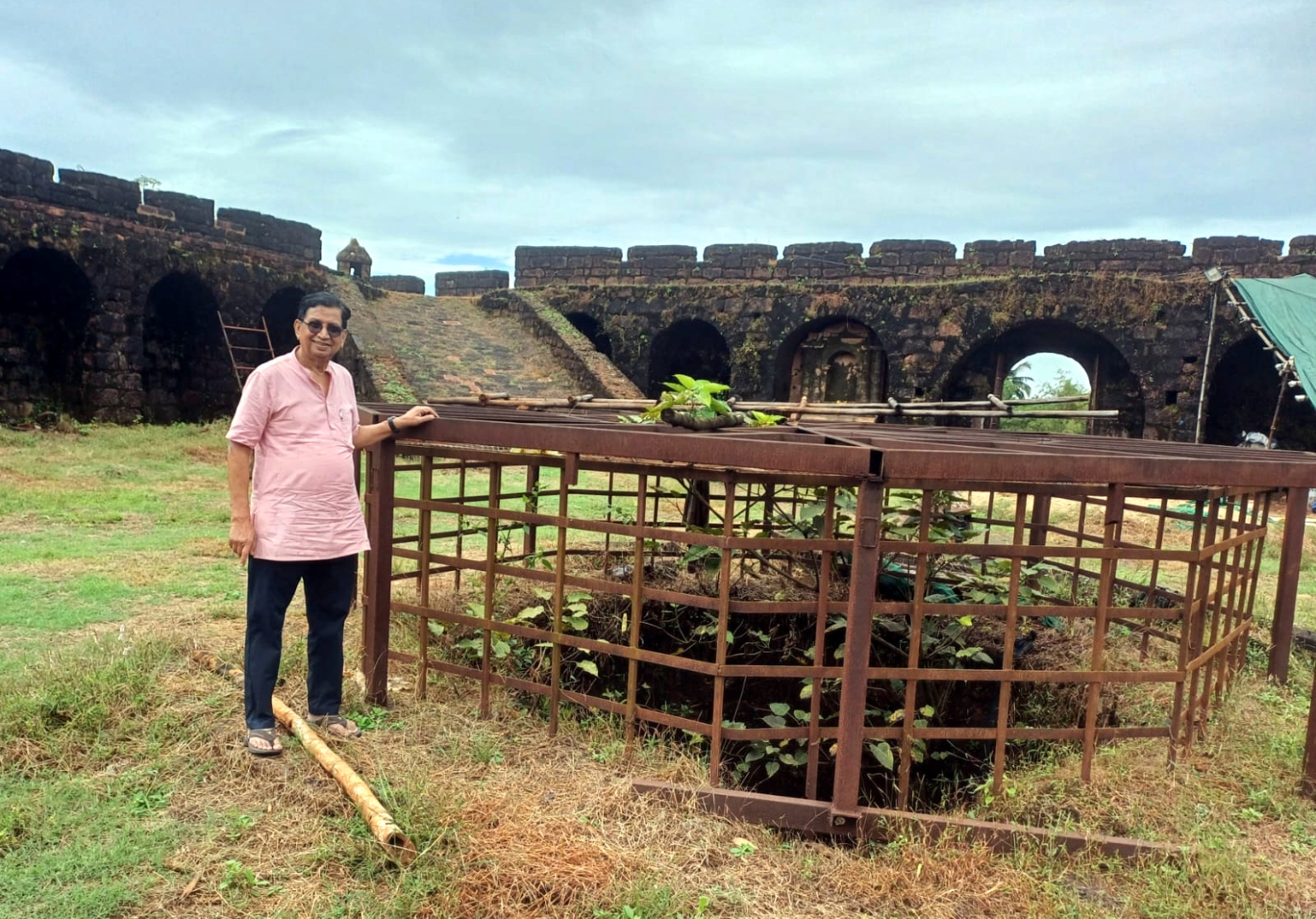GLOBAL GOENKARS SPEAK

PUNE
In 2022, I had the privilege of speaking at an online event hosted by the Xavier Centre for Historical Research (XCHR), Porvorim-Goa, about my book ‘The Bardeskars—The Mystery of a Migration’.
The virtual format brought together participants from across the globe, and one comment from a lady in Aldona stayed with me: “All Monteiros from Aldona are originally from the Khorjuve (Corjuem) ward.” That revelation sparked a personal mission—to visit Corjuem, our ancestral village.
ISLAND OF CORJUEM
Corjuem, or Khorjuve as it is also spelt, is a serene river island nestled in the Mapusa River—a tributary of the Mandovi. Until the cable-stayed bridge was built in 2004, the island was accessible only by ferry or small boats. The name itself is poetic: Zunvo means “island”, and Khor refers to a “deep stream”.
During my visit to Goa last month, I finally crossed the Mapusa River to explore Corjuem. The island greeted me with lush paddy fields, towering trees, and a tranquil atmosphere that felt like stepping into a forgotten chapter of my family’s history.
WARDS AND MONTEIRO ROOTS
Corjuem Island falls under the jurisdiction of the Aldona Panchayat. Corjuem Island is further divided into several vaddes (wards): Segundo Vaddo, Podwal, Cuxem, Sinkeri, Colomb, Baga, Barazon, Primeiro Vaddo, Novi Khazon, and Khursachi Muddi.
Monteiro families are known to reside in Cuxem, Primeiro Vaddo, and Sinkeri. On my next visit, I hope to pinpoint our exact ancestral vaddo.
CHAPEL OF MAE DE DEUS
A spiritual landmark of Corjuem is the Chapel of Mae de Deus (Mother God), established in 1855 by Joao Fillipe Ferreira. The central statue was brought from Daujim in Old Goa, and the chapel was blessed on May 3, 1855. Before its construction, Eucharistic celebrations were held at the St Anthony Chapel inside the Corjuem Fort.

Today, a resident chaplain oversees all sacraments—baptism, communion, and marriage—at the Corjuem Chapel, although official records are maintained at St Thomas Church in Aldona. Corjuem is home to over 250 Catholic families, and the chaplain also manages the Mae de Deus High School, which has served the community since 1962.
THE CORJUEM FORT
Corjuem Fort, or Forte da Assunção de Corjuem in Portuguese, is one of Goa’s few remaining river island forts. Originally under Maratha control, the island was strategically important due to its proximity to Aldona and the bordering provinces of Pernem and Bicholim.
In 1705, Portuguese Viceroy Dom Caetano de Melo e Castro took control of the island and constructed the fort to defend Bardez and the capital, Panaji. Its strategic relevance waned after the Portuguese annexed surrounding territories around 1784. The fort was later used for military training before being abandoned in 1894.
Located in Podwal Vaddo, the fort sits on elevated ground, offering sweeping views of the Mapusa River. Built from locally sourced laterite stone, it features bastions, a central well, and remnants of residential quarters and ammunition storage. Though now in ruins, restoration efforts are underway, with scaffolding and security guards signalling hope for its revival.
[Based in Pune, the writer is an engineer by academics and profession and is passionate about Goan history.]